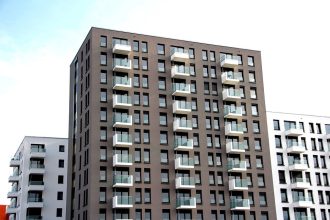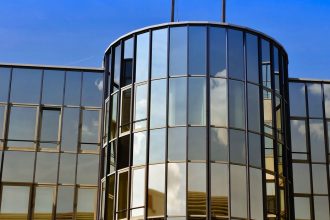Introduction
As the urgency of climate change intensifies, the construction industry is undergoing a transformative shift towards low-carbon practices and sustainable real estate development. This movement is not just about reducing emissions; it’s about rethinking how we design, build, and interact with the spaces around us. Low-carbon construction is leading the way in creating buildings that harmonize with their environment, prioritize sustainability, and foster a healthier planet. Among various initiatives, the Living Building Challenge stands out as a benchmark for performance and commitment to environmental stewardship in architecture.
The Low-Carbon Construction Paradigm
Low-carbon construction is rooted in the principle of reducing the life-cycle carbon emissions of buildings. This involves:
-
Sustainable Materials: Utilizing locally sourced, renewable, or recycled materials helps minimize the carbon footprint associated with transportation and extraction. For instance, bamboo, reclaimed wood, and low-impact concrete alternatives are gaining traction.
-
Energy Efficiency: Implementing advanced insulation, energy-efficient windows, and smart technologies reduces energy consumption. Features like passive solar design and green roofs not only lower energy use but also enhance occupant comfort.
-
Water Conservation: Water-efficient fixtures and rainwater harvesting systems conserve resources. This approach aligns with the broader aim of ensuring that water bodies remain unpolluted and ecosystems thrive.
- Waste Reduction: Constructing with minimal waste and integrating deconstruction practices at the end of a building’s life cycle supports a circular economy.
Impact of Sustainable Real Estate Development
Sustainable real estate development is crucial not just for environmental health but also for economic resilience and social equity. Here are some key benefits:
-
Economic Viability: Sustainable buildings tend to have lower operating costs due to energy efficiency, which attracts tenants and buyers alike. Furthermore, the demand for sustainable properties is continuously growing, driving up their market value.
-
Social Responsibility: Green buildings enhance the well-being of occupants through improved air quality, use of natural light, and proximity to green spaces. These elements contribute to better health outcomes and increased productivity.
- Community Involvement: Sustainable development practices often incorporate community feedback into design processes, helping to create spaces that serve the needs of local populations.
Innovative Practices in Green Building Design
1. The Living Building Challenge
The Living Building Challenge (LBC) is an ambitious performance standard that pushes the envelope of what can be accomplished in sustainable architecture. Established by the International Living Future Institute, the LBC is structured around seven “Petals”: Place, Water, Energy, Health & Happiness, Materials, Equity, and Beauty.
Key Features of the Living Building Challenge:
-
Net-Zero Energy and Water: Buildings must produce more energy than they consume and manage 100% of their water needs onsite.
-
Material Red List: The challenge prohibits the use of harmful materials, encouraging the use of healthy, natural materials.
- Biophilic Design: This design approach connects occupants with nature, promoting well-being and psychological benefits.
Prominent examples include the Bullitt Center in Seattle, known as the "greenest commercial building" in the world. It demonstrates many of the LBC principles, utilizing solar technology, rainwater harvesting systems, and composting toilets to minimize its environmental impact.
2. Modular and Prefabricated Construction
Modular construction and prefabrication are reshaping the approach to building projects. These methods reduce waste, lower emissions, and streamline construction timelines. Components are manufactured offsite, often incorporating sustainable materials, before being transported to the site for assembly. Projects like the ‘Housing for Urban Development’ in New York City showcase how modular construction can efficiently meet housing demands while respecting sustainability goals.
3. Living Roofs and Vertical Gardens
Urban areas face challenges like heat islands and biodiversity loss. Living roofs and vertical gardens address this by enhancing insulation, reducing stormwater runoff, and providing habitats for wildlife. The Bosco Verticale (Vertical Forest) in Milan is an iconic example, providing both aesthetic value and ecological benefits through thousands of trees planted on its terraces.
4. Smart Technologies
Integrating smart technologies into building design can further enhance energy performance. Smart systems can optimize heating, ventilation, and air conditioning (HVAC) based on occupancy and forecasts, making buildings adaptive to changing conditions.
Conclusion
The transition to low-carbon construction and sustainable real estate development is redefining how we perceive and interact with built environments. Initiatives like the Living Building Challenge propel the industry forward, pushing architects, builders, and developers to rethink conventional practices. Collaborations, technological advancements, and innovative practices are key to creating structures that prioritize environmental health, social equity, and economic viability. As we move towards a sustainable future, the blueprint of our homes and workplaces will serve as a reflection of our commitment to our planet, redefining what it means to build responsibly.
By embracing these changes, we are not merely constructing buildings; we are laying the foundations for resilient communities and a sustainable future.







